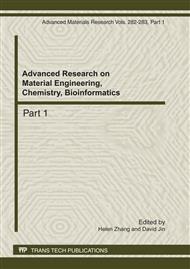p.646
p.650
p.654
p.658
p.662
p.666
p.670
p.675
p.679
Process Optimization of Candy Production Based on Data Mining
Abstract:
There are complicated correlations between process parameters and quality indicators in candy manufacturing. The objective of this work is to develop an optimization system of candy production process to improve final candy quality and to increase production efficiency. The study is conducted by using an artificial neural network data mining method to obtain optimization knowledge of process parameters from large amount of saved process data. The software platform including data processing, statistic analysis, data mining and graphical display module was developed and the quality forecasting models for typical processing operations were discussed. Experiments indicated that the system can optimize and predict the quality of candy production process effectively.
Info:
Periodical:
Pages:
662-665
Citation:
Online since:
July 2011
Authors:
Price:
Сopyright:
© 2011 Trans Tech Publications Ltd. All Rights Reserved
Share:
Citation:


